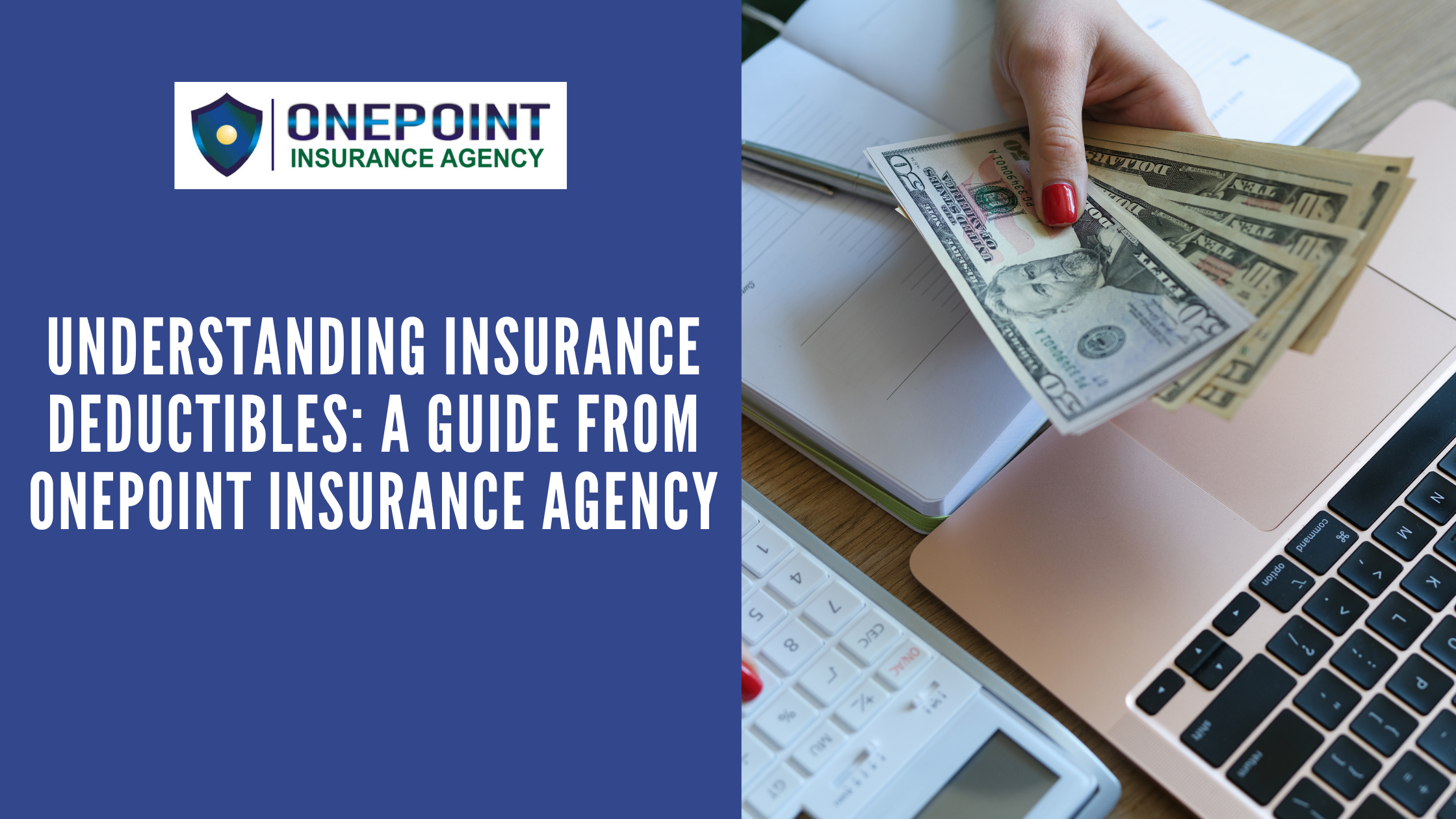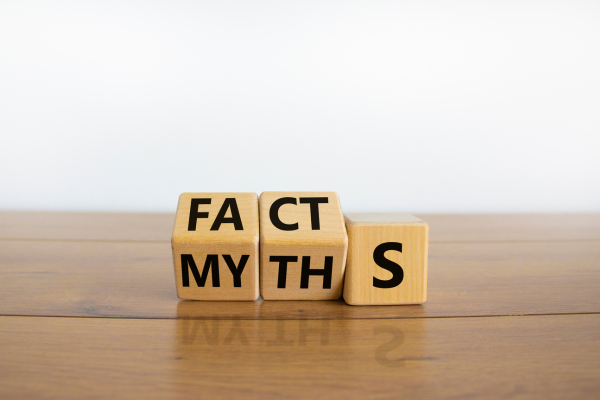

Understanding Insurance Deductibles: A Guide from OnePoint Insurance Agency
Welcome to OnePoint Insurance Agency’s guide to understanding deductibles! Think of a deductible as the entry fee to the world of insurance coverage. It's the amount you pay out of pocket before your insurance kicks in. While it might seem like just another line item on your policy, understanding your deductible is crucial to making informed decisions about your insurance coverage.
What Is a Deductible, Really?
Imagine you're at a carnival. You buy a ticket to ride the Ferris wheel. That ticket is like your deductible - a necessary step before you can enjoy the ride, or in insurance terms, the coverage. A deductible is the amount you agree to pay towards a claim before your insurance company covers the remaining costs.
Types of Deductibles: Not All Are Created Equal
Flat Deductible: A set amount, say $500 or $1,000. Simple and straightforward.
Percentage-Based Deductible: Based on a percentage of your home's insured value. More common in policies like homeowners insurance.
Per-Claim Deductible: Changes based on the type of claim. For example, a higher deductible for natural disasters.
The Deductible Balancing Act
Choosing your deductible is a balancing act. A higher deductible generally means lower premiums (the amount you pay for insurance), but more out-of-pocket costs during a claim. A lower deductible eases the financial burden when a claim is filed, but you'll pay higher premiums.
Scenario Time!
Let's say your policy has a $500 deductible, and you file a claim for $2,000 in damages. You pay the first $500, and your insurer covers the remaining $1,500. Simple, right?
When Deductibles Don’t Apply
Some policies have situations where the deductible is waived. For instance, in some auto policies, the deductible is waived if you’re hit by another driver who's at fault.
The Power of Choice
Your deductible is your choice. It reflects your comfort with risk and financial situation. Are you a risk-taker comfortable with a higher deductible for lower premiums? Or do you prefer the security of a lower deductible, knowing you won’t have to dig deep into your pockets when filing a claim?
Common Myths Debunked
Myth: A high deductible is always better.
Fact: It depends on your financial situation and risk tolerance.
Myth: You have to pay your deductible to your insurance company.
Fact: The deductible is subtracted from your claim payout.
OnePoint Insurance Agency: Here for You
At OnePoint Insurance Agency, we believe knowledge is power, especially when it comes to insurance. Understanding your deductible is the first step in empowering yourself to make the best decisions for your coverage needs.
Insurance can seem like a maze, but with the right guide, it’s a journey worth taking. Remember, we're here to help you navigate through all your insurance questions and needs.
Sign Off:
With Warm Regards,
Your Friends at OnePoint Insurance Agency
Empowering You with Knowledge, One Policy at a Time

Understanding Insurance Deductibles: A Guide from OnePoint Insurance Agency
Welcome to OnePoint Insurance Agency’s guide to understanding deductibles! Think of a deductible as the entry fee to the world of insurance coverage. It's the amount you pay out of pocket before your insurance kicks in. While it might seem like just another line item on your policy, understanding your deductible is crucial to making informed decisions about your insurance coverage.
What Is a Deductible, Really?
Imagine you're at a carnival. You buy a ticket to ride the Ferris wheel. That ticket is like your deductible - a necessary step before you can enjoy the ride, or in insurance terms, the coverage. A deductible is the amount you agree to pay towards a claim before your insurance company covers the remaining costs.
Types of Deductibles: Not All Are Created Equal
Flat Deductible: A set amount, say $500 or $1,000. Simple and straightforward.
Percentage-Based Deductible: Based on a percentage of your home's insured value. More common in policies like homeowners insurance.
Per-Claim Deductible: Changes based on the type of claim. For example, a higher deductible for natural disasters.
The Deductible Balancing Act
Choosing your deductible is a balancing act. A higher deductible generally means lower premiums (the amount you pay for insurance), but more out-of-pocket costs during a claim. A lower deductible eases the financial burden when a claim is filed, but you'll pay higher premiums.
Scenario Time!
Let's say your policy has a $500 deductible, and you file a claim for $2,000 in damages. You pay the first $500, and your insurer covers the remaining $1,500. Simple, right?
When Deductibles Don’t Apply
Some policies have situations where the deductible is waived. For instance, in some auto policies, the deductible is waived if you’re hit by another driver who's at fault.
The Power of Choice
Your deductible is your choice. It reflects your comfort with risk and financial situation. Are you a risk-taker comfortable with a higher deductible for lower premiums? Or do you prefer the security of a lower deductible, knowing you won’t have to dig deep into your pockets when filing a claim?
Common Myths Debunked
Myth: A high deductible is always better.
Fact: It depends on your financial situation and risk tolerance.
Myth: You have to pay your deductible to your insurance company.
Fact: The deductible is subtracted from your claim payout.
OnePoint Insurance Agency: Here for You
At OnePoint Insurance Agency, we believe knowledge is power, especially when it comes to insurance. Understanding your deductible is the first step in empowering yourself to make the best decisions for your coverage needs.
Insurance can seem like a maze, but with the right guide, it’s a journey worth taking. Remember, we're here to help you navigate through all your insurance questions and needs.
Sign Off:
With Warm Regards,
Your Friends at OnePoint Insurance Agency
Empowering You with Knowledge, One Policy at a Time



Address
555 North Point Center E Suite 400, Alpharetta, GA 30022
Phone No.
770-884-8117
Fax
770-884-8117

Social media
Legal
Privacy policy
Terms and conditions

©Copyright | OnePoint Insurance Agency. All Right Reserved
Information
About Us
Blog

©Copyright | OnePoint Insurance Agency. All Right Reserved






